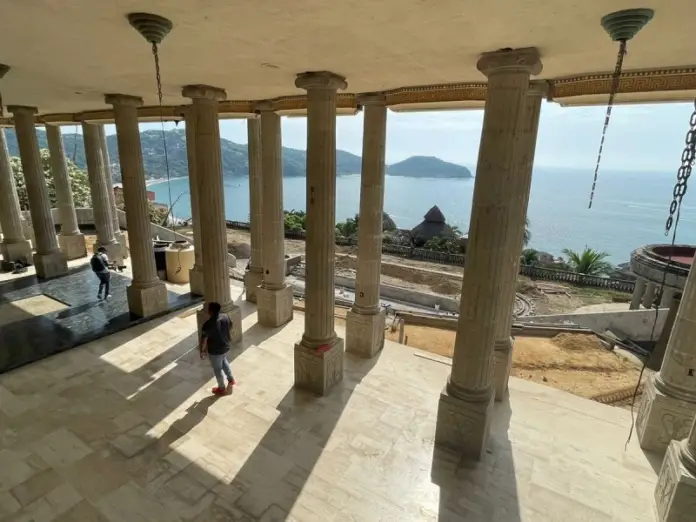
The mayor of Zihuatanejo, Guerrero, Jorge Sánchez Allec, announced that this emblematic place will become an important cultural and tourist center, adding to the attractions of the Magical Town of Zihuatanejo. With this, the aim is to strengthen and diversify the tourist offer of the region. The mayor stressed that El Partenón will be an unmissable destination for both national and international visitors.
Although the original essence of the site will be preserved, some modernizations will be carried out. In addition to serving as a stage for concerts, the space will have rooms dedicated to painting and music workshops, enriching the existing cultural offering. This project will allow El Partenón to be an open space for all, with a symbolic recovery quota, similar to that of other cultural venues, according to the official.
These actions, Sánchez Allec stressed, seek to recover a space that, in the collective imagination, belongs to all the inhabitants of Zihuatanejo.
This building belonged to Arturo “El Negro” Durazo, who was born on October 19, 1918 in Cumpas, Sonora. Coming from a family of limited resources, he moved to Mexico City during his childhood, where he began a relationship with José López Portillo. This meeting marked a crucial point in his life, as it catapulted him to become one of the most feared and controversial figures in the history of Mexico.
In the capital, he studied Commerce and Administration at the National Polytechnic Institute (IPN). However, thanks to his closeness to López Portillo, who would later become president, Durazo managed to be named Major General and head of the Police of the Federal District. From this position, he committed numerous atrocities: he corrupted the police force, tortured students, ordered the execution of criminals, bribed journalists and media outlets, organized a car theft gang made up of inmates from the Santa Marta prison, and was involved in kidnappings, bank robberies, and drug trafficking.
With funds from the police budget of the then Federal District, he built the mansion known as “El Partenón.”
According to the Mexican writer José Agustín, in his book Tragicomedia Mexicana 3, this luxurious property extended over 20 thousand square meters and had an interior lake with mechanical waves and waterfalls, swimming pools, a disco with capacity for a thousand couples, twelve elevators, a room for his car collection, stables, Greek sculptures, and a helipad. The value of the property was estimated at three million dollars. When Durazo was questioned about this extravagance, he replied that he had the right to own a house in Zihuatanejo.
Durazo organized endless parties filled with alcohol and cocaine in this mansion. A young Luis Miguel, barely 11 years old, entertained the guests of the influential police chief. This link was decisive in the rise of “El Sol de México” to fame. Luis Rey, the singer’s father, maintained a close relationship with Durazo, who recommended Luis Miguel to perform at the wedding of Paulina López Portillo, daughter of the then President of the Republic. In exchange, Durazo is said to have demanded “sexual favors” from Luis Rey’s family, and is accused of being responsible for the disappearance of Marcela Basteri, Luis Miguel’s mother.
The property of “El Partenón de Zihuatanejo” is named for its design inspired by classical Greek architecture, and was built without Durazo spending a cent, since the bricklayers were agents of the Federal District Police.
When José López Portillo left the presidency and Miguel de la Madrid Hurtado took power in 1982, Durazo fled to Brazil. The new president, with his slogan of “Moral Renewal,” used Durazo’s case to send a message against corruption. Some rumors suggest that Durazo escaped to Brazil to undergo cosmetic surgery and change his appearance, while others claim that he hoped to obtain a pardon from De la Madrid, who had a scheduled visit to that South American country.
Two years after taking refuge in Brazil, he was arrested in Puerto Rico and extradited to Mexico to face charges of smuggling, arms stockpiling, tax evasion and abuse of authority. As a result, he spent eight years in prison, until he was released in 1992 for good behavior and due to his poor health due to colon cancer. He enjoyed eight years of freedom until his death on August 5, 2000 in Acapulco.
When the former official was arrested in 1984, his house was placed under the custody of the federal government. However, ejidatarios, trusts and the state government disputed its control in the courts until in 1988 the state of Guerrero succeeded in expropriating it.
Source: meganoticias




